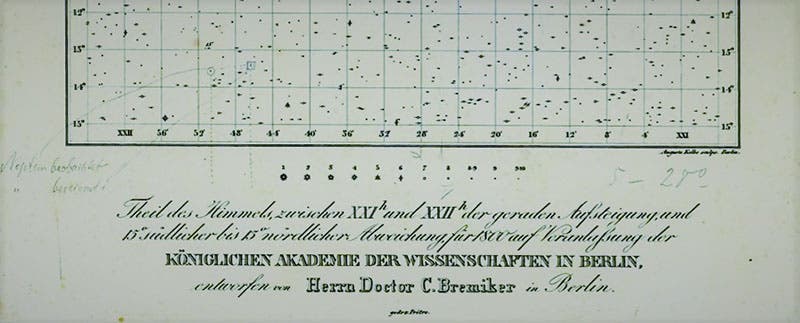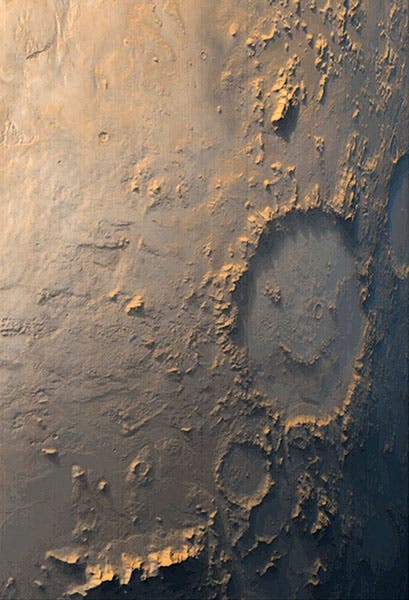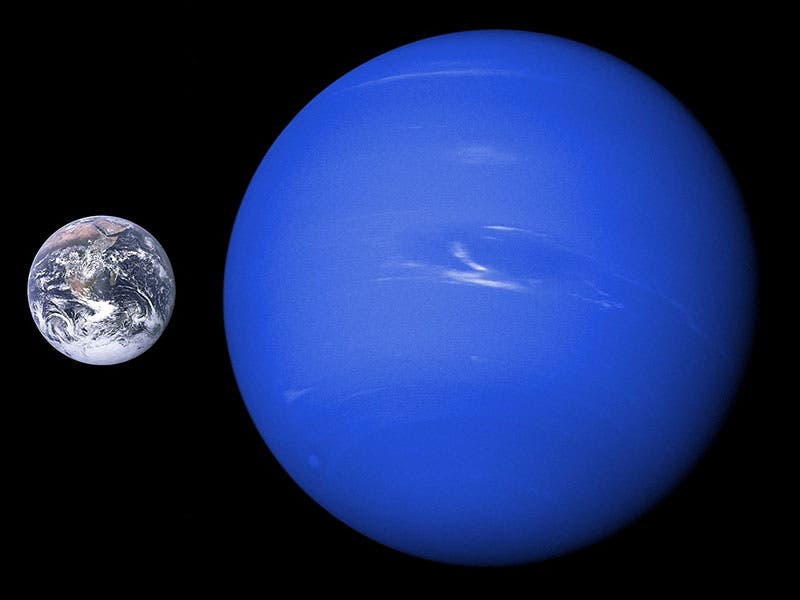Scientist of the Day - Johann Galle
Johann Gottfried Galle, a German astronomer, was born June 9, 1812. Galle was working at the Berlin Observatory when, on Sep. 23, 1846, he received a letter from Urbain Le Verrier at the Paris Observatory. Le Verrier asked for Galle’s help in looking for a new planet, whose probable position Le Verrier had carefully worked out, from perturbations in the orbit of Uranus. Galle was happy to oblige, and he had two things going for him: a 9-inch equatorial refractor built by the firm of Joseph Fraunhofer, just the thing for planet searching, and a new star chart for the area of prediction by Carl Bremiker, showing every star one could see through that telescope. If there were a suspicious object in the field of search, it should be easy to determine whether or not it was a pre-existing star. Actually, he had a third thing going for him that was very important: he was willing to look.
So perhaps it was not completely unexpected that, on the very first night, Sept. 23, 1846, Galle spotted an object that was not on the chart, about one degree removed from the location predicted by Le Verrier. This was indeed a new planet, later named Neptune, and Galle was the first person to knowingly see it (we say “knowingly” because Galileo recorded the position of Neptune twice, on Dec. 28, 1612, and Jan. 28, 1613, while observing Jupiter, but he thought it was a star, not a new planet, and he never looked at it again). Unfortunately for Galle, hardly anyone today recognizes him as the discoverer of Neptune, even though he saw it first. That honor instead goes to Le Verrier, and to a fellow English predictor, John Couch Adams, whose standing however has fallen fast, due to recent revelations by historians that he wasn’t quite as good a predictor as we used to think. For more on Le Verrier and the discovery of Neptune, see the post we did on Le Verrier a year ago, and one on George Biddel Airy, posted three years ago.
But Galle had the last laugh, or perhaps one should say, the last smile. Nearly every astronomer has an extraterrestrial crater named after him or her. Le Verrier has one on the Moon and one on Mars, but neither stands out. John Couch Adams has one on the Moon, but it too is rather ordinary, and moreover, he has to share it with two other astronomers named Adams. But Galle’s crater is one of the perkiest in the entire solar system (fourth image, below). It is located on Mars and was discovered by NASA’s Viking missions in 1976. Galle crater is also known as the “Happy-Face” crater, and a peek is a good way to start your day. This image was taken by the orbiting Mars Global Surveyor in 1999.
The Fraunhofer refractor used by Galle to discover Neptune survives and is on display in the Deutsches Museum in Munich (second image, above). The Bremiker star chart of hour circle 21, used to confirm the discovery, also survives (see a detail, third image, above). There are two annotations at bottom left; one says “Neptune beobachtet” – “Neptune discovered” – and a line points to a circled dot where the new planet was first seen. The other scribbled word says “berechnet” – “calculated”, and its line points to a square box where Le Verrier predicted the new planet to be. The annotations may be by Galle, but they were certainly not made on the night of discovery, as the name “Neptune” had not yet been conferred. I assume this historic chart is in the library or archives of the former Berlin Observatory, or perhaps in the Leibniz Institute for Astrophysics (AIP) in Potsdam, which now manages the observatory, but I do not know for certain. The Institute does own the portrait of Galle, made about 45 years after his discovery of Neptune, that we used for our first image.
I do not think it will ruin the historical nature of these anniversaries if we show you a Neptune that neither Galle nor Le Verrier could ever see, one photographed by the Voyager 2 spacecraft in 1989. A separate Apollo-photographed Earth is set next to it, to provide a sense of scale. Those are two of the most beautiful Blue Marbles in our part of the cosmos. And Johann Galle discovered one of them.
Dr. William B. Ashworth, Jr., Consultant for the History of Science, Linda Hall Library and Associate Professor emeritus, Department of History, University of Missouri-Kansas City. Comments or corrections are welcome; please direct to ashworthw@umkc.edu.










